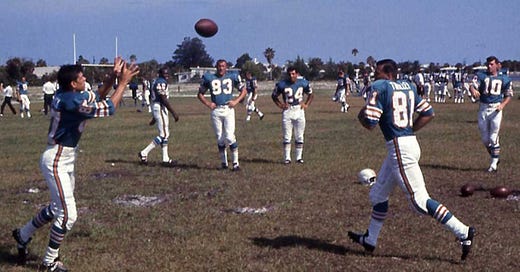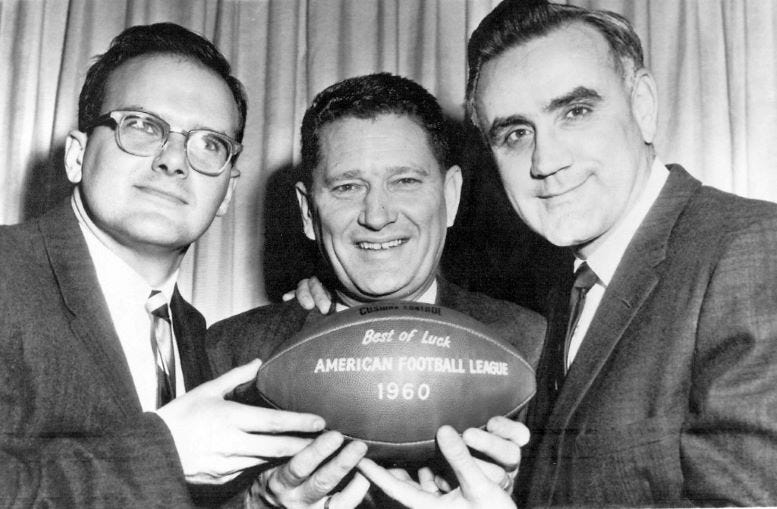AFL Expansion Leads to Miami Dolphins in 1965
The story of how the Dolphins were awarded to an ownership group based in Miami as part of the American Football League's expansion in 1965.
By the end of the 1950s, the National Football League (NFL), was able to reflect on its most stable and profitable decade since its inception in 1920. It was during this decade that football was ushered into the television era, which provided the sport the opportunity to grow its national profile and add much needed revenue to the operation of the league.
One of the biggest issues facing the NFL in 1959 was expansion. There was great demand by new communities, with well-funded prospective ownership groups, that were ready to invest in new franchises when the league was ready. However, the twelve NFL owners showed little interest in expanding at that time. The existing owners were concerned about the viability of new franchises and the impact of sharing television revenue with a larger group of owners. It was at this time that an upstart league formed with the hopes of eventually merging with the more established National Football League.
Formation of the American Football League (AFL)
After repeated attempts to encourage the NFL to consider expansion, several prospective team ownership groups lost patience and formed a new, competitive football league on July 17, 1959. The name of the new association was the American Football League (AFL). The league was focused on competing with the NFL in the 1960 season. They planned on fielding a league of eight teams, with several of their franchises competing in the same market as an NFL team.
The first eight franchises in the AFL were in the following cities: Boston (Patriots), Buffalo (Bills), Houston (Oilers), New York (Titans), Dallas (Texans), Denver (Broncos), Los Angeles (Chargers) and Minnesota. The Dallas franchise would later move to become the Kansas City Chiefs. New York would later rename from the Titans to the Jets.
However, as a counter move to disrupt the formation of the new league, the NFL provided a more enticing offer to enfranchise the Minnesota Vikings from the AFL to the NFL. The Minnesota Vikings accepted the offer to join the NFL leaving the AFL one team short to begin play in 1960.
Given the change of direction by Minnesota, the AFL commissioner, Joe Foss, turned his attention to St. Louis as a possible replacement. However, the city was more focused on trying to attract Bill Bidwell and the Chicago Cardinals to move to St. Louis, so Foss quickly moved onto plan B. On January 30, 1960, Foss accepted Oakland as his league’s final entrant. The Raider’s ownership group was considered financially unsound, but it was the best option left for the upstart new league. Lamar Hunt, owner of the Dallas franchise, was elected the league’s first president on January 26, 1960.
Keep reading with a 7-day free trial
Subscribe to Miami History to keep reading this post and get 7 days of free access to the full post archives.





